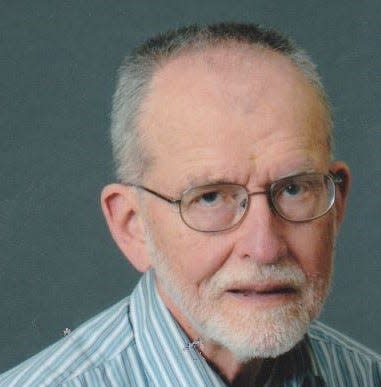Paul deLespinasse: What anti-green spin-doctors always leave out
Professional anti-green writers recite many interesting facts in their analysis of energy problems. But they also exemplify the fact that, as poet William Blake (1757-1827) put it, "a truth that's told with bad intent, beats all the lies you can invent."
These writers, like all critics of wind and solar energy, always point out that these sources vary greatly from hour to hour, day to day, and month to month, which is clearly true.
It is also true, as these critics tell us, that we cannot store enough electricity to compensate for this intermittency. Batteries might store enough in the daytime for nighttime use, but could not handle immense seasonal fluctuations in solar energy.

The PV panels on my roof produce only one-fifth as much monthly electricity in the winter as they do mid-summer. A battery that could store enough for a whole winter would be bigger than our house and cost a fortune we could never recoup.
Although the facts that the anti-green writers bombard us with are true, they always leave out two vital facts:
The sun is always shining somewhere.
A worldwide grid will make mass storage of electricity unnecessary.
When the entire planet is connected with a single electrical grid, electricity produced where the sun is shining will be transmitted through that grid to where it is needed. A few batteries may be necessary to smooth out small fluctuations in supply or demand, but long-term storage won't be needed.
A world-wide grid was envisioned by Buckminster Fuller in the 1930s, when electricity couldn't yet be transmitted the needed thousands of miles. But since then better technology has been developed. Using high voltage direct current (HVDC) the entire planet can now be wired up into the single grid, permitting replacement of climate-threatening carbon fuels with green energy.

Not only is a world-wide grid now possible, its basic elements are already being built. The people constructing it may be unaware that they are doing this. They are just building larger grids in order to decrease the cost of delivering dependable power to consumers.
They are taking advantage of opportunities created by improved technology.
High-voltage direct current (HVDC) lines are already operating in Europe, North America, China, Africa and South America.
Plans are afoot to bring solar energy from Morocco to the United Kingdom. A subsea cable will carry solar energy from Australia to Singapore. A 9,300-mile line may be built from the Chilean desert to China.
These existing and projected grids will ultimately be connected into a universal grid if the logic of the situation takes its full course. In any network the value of each part of it increases as the size of the network increases. The internet, for example, makes individual computers far more useful and valuable than they would be if they couldn't communicate with so many other computers.
Today, when locally available solar and wind energy exceed local demand, they have to be turned off, wasting energy they could have provided. Connected to a larger grid, this surplus will be transmitted to another location, allowing less coal or natural gas to be burned there.
Solar PV panels are therefore better investments the bigger the grid they are connected to. But they are already valuable enough to motivate the investments needed to produce the smaller grids
I have brought these facts to the attention of leading antigreen writers. They don't mention these facts in their books and articles because they demolish their claim that we cannot depend on green energy to replace carbon fuels.
Recent problems in the supply of electricity, which anti-green critics delight in highlighting, show that there will be many challenges in getting a graceful transition from climate-wrecking carbon fuels to green energy. Their false claims that green energy cannot power the world are increasing these problems.
This article originally appeared on Hillsdale Daily News: Paul deLespinasse: What anti-green spin-doctors always leave out

